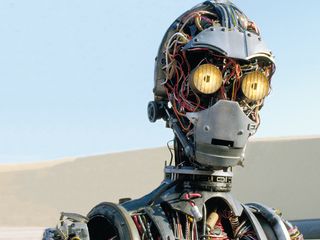Why 2D-3D conversions are great news for the rise of 3D HD
And why the secret is not rushing it

The concept of converting 2D films into 3D got off to possibly the worst possible start with the Clash of the Titans remake earlier this year.
Critics almost universally slammed the ret-conned 3D effect, and even director Louis Leterrier said it hadn't been his intention to do the movie in 3D and that the technology wasn't ready.
James Cameron, riding high on the record-breaking success of Avatar, also derided the process, saying: 'If you want to make a movie in 3D – make a movie in 3D.'
Recently, though, Lucasfilm announced that it will be releasing a 2D-3D version of The Phantom Menace in cinemas next year, with the other five films in the Star Wars canon to follow. And it's clear that George Lucas and his minions think they can craft an impressive 3D picture.
The secret, it seems, is not rushing it. 'Getting good results on a stereo conversion is a matter of taking the time and getting it right,' confides John Knoll, visual effects supervisor for Industrial Light & Magic.
'It takes a critical and artistic eye, along with an incredible attention to detail to be successful. It is not something that you can rush if you want to expect good results. For Star Wars we will take our time, applying everything we know both aesthetically and technically to bring audiences a fantastic new Star Wars experience.'
Of course, that's what you'd expect him to say, but it's no secret that Clash of the Titans' conversion was completed in around 10 weeks. When the first Star Wars 3D film arrives, it will have undergone a much more arduous journey.
Get daily insight, inspiration and deals in your inbox
Get the hottest deals available in your inbox plus news, reviews, opinion, analysis and more from the TechRadar team.

The importance of time and attention to detail is something echoed by Jon Thompson, former Home Cinema Choice columnist and head of UK operations at Reliance MediaWorks, a global end-to-end movie services company that has set up one of the world's leading 2D-3D authoring houses (as well as doing remarkable restoration work in the traditional 2D environment, but that's another story…).
He's adamant that, when done properly, 2D-3D conversion has a future. Thompson came to HCC armed with a disc full of upconverted demo sequences to prove his point. And by and large he did.
3D clips from a diverse collection of cinema faves (everything from massive Summer blockbusters to low-budget horrors) all seemed high quality, with an enjoyable, believable sense of depth added to the proceedings.
Thomson also explained how the complex software works in tandem with human engineers, and that work is done on a frame-by-frame basis. Essentially, each frame is analysed and separate parts of the image isolated depending on where they sit on the Z-axis – then, alternate frames are generated with a different composition to provide the information for the right eye.
What's incredibly neat is that the level of depth can be adjusted to suit the wishes of the director. We were shown the same sequence processed in a number of different ways: one where there was an exaggerated sense of things coming out of the screen; one where it was much more subtle; one where all the depth was in the background; others where separate objects were placed nearer or further away from each other at varying degrees; and more.
Money for nothing?
It's easy to see from an economic point of view why 2D-3D conversions are attractive to studios. If you can create a new cinema version of a much-loved film for around $5m, it won't have to do that well at the multiplex to make a profit. Only a fool would bet against Return of the Jedi 3D making a killing at the box office.
Of course, there's a limit to how many films studios would be happy to re-release in cinemas (they'll have to find a space in the schedule, for a start), so many of the titles that we'd like to see brought back to life in the new format may not get the chance.
It's then that they'll have to consider whether the cost of the 2D-3D process can be covered by 3D Blu-ray sales alone.
Perhaps anyone still doubtful as to the merits of 2D-3D conversion should look no further than James Cameron himself. Not long after Clash of the Titans hit the headlines for all the wrong reasons, the film-it-in-3D guru had done a U-turn and announced that his epic 1997 drama, Titanic, was to be given a 3D polish for a cinema release in 2012.
Surely if it's good enough for James Cameron, it's good enough for us. Could it be time to give 2D-3D films a second chance?
Most Popular

